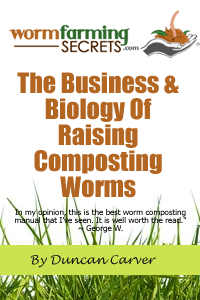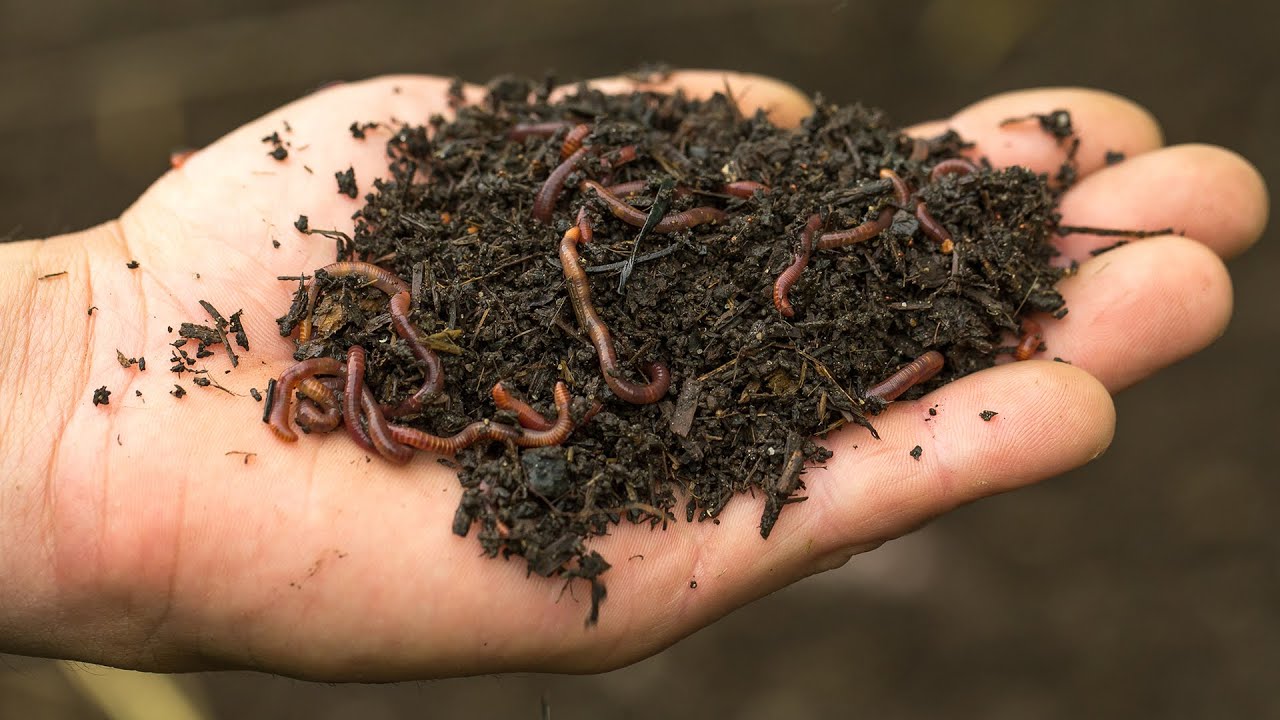“Dear Duncan, I was told that ALL fruits & veggies should be blended into the tiniest pieces possible so that the worms will be able to eat them better. Then my son, who has done this before says that he used to throw whole banana peels into his & his friends worm bin and they ate them in seconds. Which is correct? It would be LOTS easier to do it his way. Please Help!!!! Thanks for your patience,” ~ M.E.
Hi M.E.,
I think your son may be pulling your leg a little there. 🙂
In a well-optimized worm bin, waste materials can certainly be broken down quite quickly (some much more quickly than others), but there isn’t ANY material that will be broken down in seconds (well, perhaps a small amount of sugar or honey).
You’ve raised an interesting topic for discussion though – to puree or not to puree, that is the question.
On one end of the scale we have large solid materials – like a whole apple or carrot for example. On the other end we have materials that are virtually thick liquids or pastes. In between, we have an endless range of possibilities. What consistency you prefer to have your waste materials is up to you, but there are certainly some important considerations to keep in mind.
Let’s start with whole fruits and veggies. Generally speaking, leaving them completely intact is not the best way go. Mother Nature has provided plants with highly-resistant, protective barriers to help prevent invasion by the wide array of organisms (both large and small) that are interested in feeding on the nutrient-rich inner tissues.
Obviously some fruits and vegetables (and plant materials in general) are a LOT more resistant than others. Take root vegetables for instance – if you simply tossed fresh carrots, potatoes or turnips into your worm composting system they would more than likely attempt to grow into a full plant.
These underground roots and tubers are especially resistant to breakdown since they not only have to fend off the rich diversity of soil microorganisms, but must be protected from the physical stress of pushing down through the soil.
Various fruits, like bananas and berries on the other hand are much more prone to breakdown – the main purpose of these structures is to spread seeds, soit makes sense that they would not only be tempting to organisms (like us mammals for example) as a food source, but that they would also easily decompose so as to be able to release their seeds.
That said, it still doesn’t make much sense to toss whole bananas into your worm system – although, as your son has pointed out, the peels break down just fine. Remember (from my previous answer this week) that the microbes are responsible for a LOT of the actual decomposition of materials in a composting system.
Whole materials not only are much better guarded from microbial invasion (since only outer protective barrier is exposed to attack), but they also have far less surface area for the microbes to colonize. As such, I highly recommend that you AT LEAST cut your fruits and veggies up a little so the microbes can access the inner tissues.
Coarsely chopped up materials can be beneficial in that they are more of a slow-release food (and moisture) source. If, for example, you are planning to go away or simply don’t want to add food on a regular basis, it will helpful to bury chunks of fruit/veg, like apple halves, watermelon rinds etc, so that they will break down more slowly over time and provide an ongoing source of nutrition for the worms.
Apart from the slow-release benefits, these bulky materials will also help to maintain airflow in the bin – something that is very important, especially in a sealed plastic container. You may want to take things a step further in the case of the really resistant materials – such as the root veggies mentioned earlier – and actually cook them before adding them to the bin (once cooled down, that is). They will still be a good slow-release food, but this way there is no chance they’ll try to grow into a full plant.
At the other end of the spectrum you have the pureed fruits and veggies. In all honesty, I never do this myself, and think it’s not only unnessary, but it can actually be detrimental to your system.
By blending things up you can get a LOT more stuff into a smaller volume, so there is a good chance you’ll end up adding a lot more than you would if it was coarsely cut up – which can potentially lead to various problems (such as overheating etc). Also, given the fact that there are no air spaces between the individual particles, the material will easily go anaerobic even when added in relatively small amounts.
If you DO blend your food, make sure to mix it well with shredded cardboard or some other bulky, yet absorbent, bedding. This would actually be a great way to create an ‘ideal’ worm food. Worms already love cardboard, so you can imagine how much they’d like it if it was ‘souped up’ nutritionally with a food waste slurry.
I personally prefer a particle size that is somewhere in the middle between these two extremes – when materials are chopped to 1-3 inches they’ll provide a lot more surface area for microbial colonization (and thus zones for worm feeding), but they will also allow a lot more air flow than a pureed mixture would.
That being said, I’ll admit to being lazy a lot of the time however – opting to simply add materials just as they are (since usually cut up somewhat already), with perhaps some additional chopping of any whole fruits/veggies that happen to be included.
Hope this helps!



